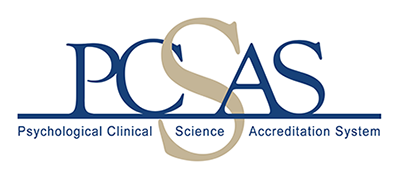By Samantha Dashineau, M.S., Purdue University
Students in clinical psychology programs may choose to create their own external practicum experiences for a variety of reasons. For me, the internal clinic in my program did not accept clients with eating disorders, which meant I was not able to work with a clinical population of interest during internal practicum. Furthermore, when I began looking at external practicum sites that my program had an established relationship with, none treated clients with eating disorders. Gaining this experience was important to me because I wanted to be able to offer evidence-based care for a presenting problem that, in my anecdotal experience, is frequently referred out to specialist providers. Thus, I wanted to work with specialist providers to learn how to competently deliver care for those with eating disorders.
Students in my program had occasionally set up external practicum sites over the years. However, this was not necessarily a common practice within my program. I was aware it could be done but needed to do some independent work to make it happen. This brief guide will walk you through the steps I took with the understanding this process will likely differ between graduate programs. The steps are as follows:
- I talked to the director of clinical training in my program. I worked closely with my clinical supervisor to peruse each facility’s website and discuss the possible pros and cons of each potential practicum site. In addition, I read my program’s handbook and read the formal ways to establish a practicum site. For me, this meant certain people in the program needed to approve my application for a new site, and certain forms needed to be completed.
- I then decided which sites I wanted to reach out to. I drafted an email introducing myself, including a brief description of my standing in the program, my clinical interests, and a broad overview of my clinical experience to date. I also attached a current CV. Next, I had someone I trusted proofread the email before sending it. I CC’d my clinical supervisor on this email who then replied all to the email confirming that I was indeed a student prepared for clinical practicum and offered to answer any questions about my home institution or my training, which I believe put some sites at ease.
- Then, I waited! Some sites never got back to me and some indicated interest right away. I did follow up with one that I was particularly interested in, but ultimately never heard back.
- I prepared for the interviews I had by remembering that I was also interviewing them. I went in with a list of the top three things I wanted a practicum to have and things I would like to learn to ensure we were on the same page. I found this particularly helpful because, in my experience, non-established sites may not understand your program’s specific rules or structure for practicum students. An additional aspect I considered was hours expectations. Sites that do not often have students may not be aware of the typical practicum expectations, so I found it important to discuss this upfront to make sure it would fit with my expectations.
- I was then lucky to receive an offer at a place of interest! In my experience, there was a bit of scaffolding required. For me, this meant explaining the program’s expectations regarding supervision and student duties and ensuring certain forms were completed, like competency evaluations. Programs will, of course, differ in their procedure but ultimately it is the student’s job to ensure these administrative tasks are completed.
- Lastly, before beginning, I tried to think again about what types of experiences I wanted. Beginning any practicum is a great time to think of goals and in making my practicum, I felt as though I had a bit more freedom to pursue my interests and goals relative to other established sites where I had been a student.
- I tried to enjoy it and learn as much as I could! I learned a lot about myself as a clinician and enjoyed the flexibility and breadth of training that creating my site allowed me. I got to participate in a wide variety of clinical activities that enhanced my training such as curriculum planning, assessment, interdisciplinary team, and group treatment. I would recommend creating a site for anyone who feels the established sites within/through their current program do not meet their clinical goals.
In summary, it is entirely possible to create your practicum if your program allows it. In addition, starting a new site may be a great option for students in programs that are not located near many of the sites that have an established relationship.
Disclaimer: The views and opinions expressed in this newsletter are those of the authors alone and do not necessarily reflect the official policy or position of the Psychological Clinical Science Accreditation System (PCSAS).


